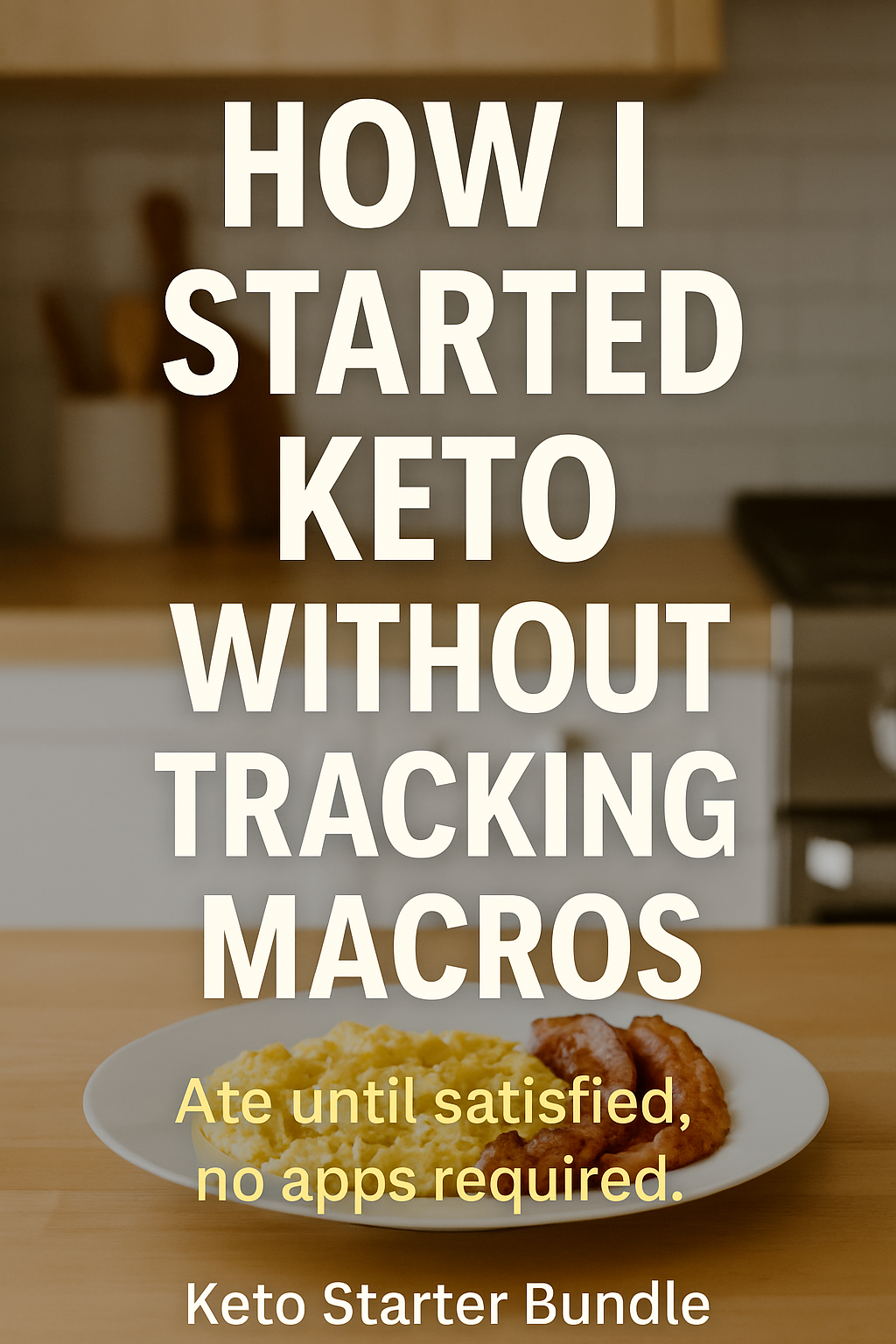Keto was tough to keep up with for me. At first, it felt like the perfect way to lose weight and gain energy, but over time, I noticed I was feeling tired, cold, and stuck in a weight loss plateau. I quit keto because it wasn’t working for my body or lifestyle anymore, and I needed a change that felt sustainable.

After quitting, I learned a lot about how my body reacts to different foods and how important balance is. I gained new energy and muscle, and I felt stronger than before. This experience helped me return to keto with smarter choices and a healthier mindset.
Now, I follow keto in a way that fits me better rather than sticking strictly to old rules. My journey showed me that quitting something doesn’t mean failure — it can lead to a smarter, stronger comeback.
Key Takeways
- Changing my diet helped me find what really works for my body.
- Taking a break allowed me to gain strength and new energy.
- Coming back with adjustments made keto more sustainable for me.
Why I Quit Keto
Quitting keto wasn’t a simple choice for me. I faced several challenges that made sticking to the diet harder than I expected. Tracking every detail, feeling like I had to be perfect, and losing my usual planning routine all played a role.
Feeling Overwhelmed By Tracking Macros
At first, tracking my macros seemed manageable. But over time, it became exhausting.
I had to log every single meal, count carbs, fats, and proteins precisely. This took a lot of time and mental energy.
Even eating out was stressful. I’d worry about hidden carbs or inaccurate nutritional info.
It got to a point where tracking felt like a full-time job. The constant counting made me lose enjoyment in food.
This pressure was one of the biggest reasons I decided to stop keto.
Struggling With Perfectionism
I wanted to follow keto perfectly. Missing macro goals or eating a little more carb than allowed felt like failure.
I found myself obsessing over small mistakes, which made me frustrated and discouraged.
That mindset made it hard to stay consistent. Keto felt like a strict rulebook rather than a helpful way to eat.
Instead of trying to find balance, I often quit for days or weeks when I “failed.”
This cycle of aiming for perfection and then slipping up was exhausting.
Life Got Busy And I Lost My Planning Routine
Before keto, I usually planned meals in advance. This helped me stick to my goals and avoid temptations.
But when my work and family schedule got busier, I stopped planning.
Without meal prep, I made quick food choices that didn’t fit keto rules.
Lack of planning led to skipping meals or eating out more often.
This made it almost impossible to keep the routine keto needs.
When I couldn’t stay consistent, quitting felt like the only option.
How The Keto Starter Bundle Could Have Helped
Looking back, having some extra support might have made a difference.
A keto starter bundle—like meal plans, recipes, and tracking tools—could have saved me time.
Prepared shopping lists or easy recipes would have reduced stress.
If I’d had clearer guidance, I might not have felt overwhelmed by tracking.
This kind of support can help keep people on track during busy or stressful times.
It’s the kind of help I wish I had when I first started keto.
For more insights, see My Experience Of Quitting Keto After 8 Strict Months.
What Happened After I Quit
After quitting keto, I noticed many changes in how I felt and how my body reacted. Some were unexpected and tough to handle, but they showed me what my body really needed. Here’s what I went through.
Low Energy And Brain Fog
At first, my energy dropped a lot. I felt tired even after a full night’s sleep. It was hard to focus at work or during conversations. My brain felt clouded, like I was moving through fog.
This low energy lasted for a few weeks. I realized my body was adjusting to using carbs again for fuel. Drinking water and eating balanced meals slowly helped me feel more awake.
Clothes Fitting Tighter
My clothes started feeling tighter. Pants that once fit well became snug around the waist. It was frustrating because it didn’t match what I was eating — I wasn’t bingeing or overeating.
This was likely because my body was holding more water and glycogen after leaving keto. Rather than fat gain, it was a normal change as my metabolism shifted back.
Feeling Out Of Control
Without the keto rules, I felt lost. I wasn’t sure what to eat or how much. The freedom from restrictions felt like chaos at times.
I had to learn new habits and find balance without strict limits. Tracking my feelings around food helped me regain some control and avoid slipping into extremes.
Emotional Challenges And Guilt
I felt guilty for quitting. The diet was part of my identity, and stopping it felt like failure. That made me anxious and a bit down.
Talking with friends and reading others’ stories helped me understand it was okay to change paths. I gave myself permission to explore what works best for me now.
What Made Me Come Back
After quitting keto, I realized there were clear benefits I missed that affected my body and mind. I also learned to be kinder to myself by focusing on progress instead of perfection. Using simpler ways to manage the diet made it easier to stay consistent without stress or obsession.
Physical And Mental Benefits Of Keto
The first thing that drew me back was how my body felt stronger and clearer on keto. I noticed better digestion and fewer mood swings. Mentally, I was sharper and less foggy, which helped me stay focused at work and during my daily tasks.
Physically, my energy was steady all day. I didn’t get the usual crashes after meals, and my sleep improved too. These effects made me feel confident knowing keto supported both my body and mind in real, noticeable ways.
Missing Clarity, Reduced Cravings, And Energy
When I stopped keto, cravings for sugar and carbs came back strong. I missed the clear feeling my brain had on keto, where I didn’t feel scattered or distracted. The boost of energy I had from steady fat-burning also disappeared.
Without keto, I found myself snacking more often and feeling tired in the afternoon. This made me realize how much keto helped me control hunger and keep my energy stable, which motivated me to give it another try.
Adopting A Progress Over Perfection Mindset
One big change I made returning to keto was to accept it’s okay not to be perfect. I learned that small mistakes don’t ruin everything, and slowing down can actually help long-term success.
Instead of chasing strict rules, I focused on steady improvements. This way, I felt less pressure and more freedom to enjoy meals without guilt. Adopting this mindset kept me consistent and less stressed about setbacks.
Letting Go Of Obsessive Tracking
Before, I tracked every gram of carbs and fat, and it became exhausting. When I came back, I chose to relax a bit and trust my body more. I still kept an eye on my intake but didn’t obsess over every detail.
This balance made keto feel doable every day, not overwhelming. I could listen to hunger cues and eat without fear, which made keto a sustainable part of my lifestyle rather than a strict chore.
Using Tools For Simplicity
I found that using simple tools saved me a lot of time and stress. Apps that estimate carbs and easy meal plans helped me stay on track without overthinking.
I also kept quick snacks and basic pantry staples ready for busy days. These small steps made it easy to make keto-friendly choices on the go, helping me stay consistent without complicated prep.
What I Did Differently The Second Time
When I went back to keto, I didn’t just repeat the old habits. I made some clear changes that helped me stick with it better and enjoy the process. My approach to meals, tracking, and tools was smarter and more hands-on.
Starting Simple With Meals And Groceries
I focused on basic, easy meals using ingredients I liked. Instead of trying complicated recipes, I picked a few staples that worked well for me, like eggs, avocado, cheese, and leafy greens. This made shopping straightforward and saved time.
Keeping a simple list helped me avoid buying tempting high-carb foods. I learned to read labels carefully and choose natural, whole foods. This kept my carbs low without feeling like I was missing out.
By keeping meals simple, I felt less stressed. That meant I was more consistent, which helped me see steady progress.
No Tracking, Just Enjoying Low-Carb Foods
The first time I did keto, I tracked every carb and calorie. It wore me out and made meals feel like a chore. The second time, I stopped tracking numbers so strictly.
Instead, I focused on enjoying foods that were low carb and keto-friendly. I trusted my body more and ate when I was hungry. This helped me avoid obsessing over food and made keto feel more natural.
This way, I avoided burnout. It also made social meals and eating out less stressful since I wasn’t counting every bite. Trusting the process was key for keeping keto fun and doable.
Creating The Keto Starter Bundle As My Go-To Tool
One big change was using a clear, simple resource to guide me. I put together a keto starter bundle with easy-to-follow guides, recipes, and meal plans.
This bundle had everything I needed to stay on track: a simple beginner guide, quick recipe books, and even a 14-day meal plan. It helped me avoid confusion on what to eat and when.
Having this go-to toolkit made cooking and planning faster. It also gave me confidence because I didn’t have to guess what was keto-friendly. This kind of clear support made a big difference for me, especially early on. You can find a helpful Ultimate Keto Bundle that offers similar tools.
What I Learned From Quitting
Quitting keto taught me some important lessons about flexibility, patience, and using the right tools. I realized I didn’t have to be perfect to succeed. My mindset changed from strict rules to smarter choices and better support.
Keto Doesn’t Need To Be All-Or-Nothing
At first, I thought going full keto was the only way to get results. But I learned that lowering carbs without cutting them out completely can still help. Doing keto sometimes or using a more relaxed version worked better for me.
This made it easier to stick with the diet without feeling deprived. It helped prevent the extreme restriction that caused problems before. Finding balance where I felt good physically and mentally mattered more than strict keto.
It’s Okay To Fall Off And Come Back
Before, if I slipped up, I felt like I failed. Quitting taught me that messing up is part of the process. I learned to be kinder to myself and get back on track without guilt.
This mindset made a big difference. I stopped obsessing about perfection and focused on progress. Accepting that there will be ups and downs helped me stay motivated for the long run.
Support And Strategy Over Willpower
Trying keto without community or a clear plan made things harder. I realized that willpower alone isn’t enough to stick with any diet. I needed support from others who understood the struggles.
Having a strategy also helped. Tracking meals, planning snacks, and learning what worked for my body made sticking to keto doable. Support groups and guides gave me advice and motivation when I felt stuck.
How The Keto Starter Bundle Supports Success
Using a keto starter bundle changed my approach for the better. The bundle gave me the basics I needed, like meal plans, shopping lists, and tips. It removed the guesswork and made keto less overwhelming.
The bundle also had easy recipes that fit my schedule. The combination of clear advice and practical tools helped me manage meals without stress. This kind of support made it easier to make lasting changes.
If you want a clear path, a starter bundle can be a helpful way to keep keto simple and sustainable.
More about quitting keto experiences
Conclusion
Quitting keto was not easy, but it helped me learn more about my body and what really works for me. I realized that strict dieting isn’t always the answer.
Taking a break gave me fresh energy and a better outlook. I came back stronger by being more flexible and paying attention to how I feel, not just the rules.
Here’s what I learned that helped me move forward:
- Listen to your body: If something isn’t working, don’t be afraid to change it.
- Balance is key: Extreme restrictions are hard to keep up.
- Focus on wellbeing: Mental and physical health go hand in hand.
If you’re thinking about quitting keto or any diet, remember it’s okay to switch things up. What worked for me might not work exactly the same for you, and that’s fine.
I found more freedom and better health when I stopped stressing over perfection. Sometimes stepping back is the best way to move forward.
For more personal experiences about quitting keto and coming back stronger, see this detailed story on quitting keto after strict months.



